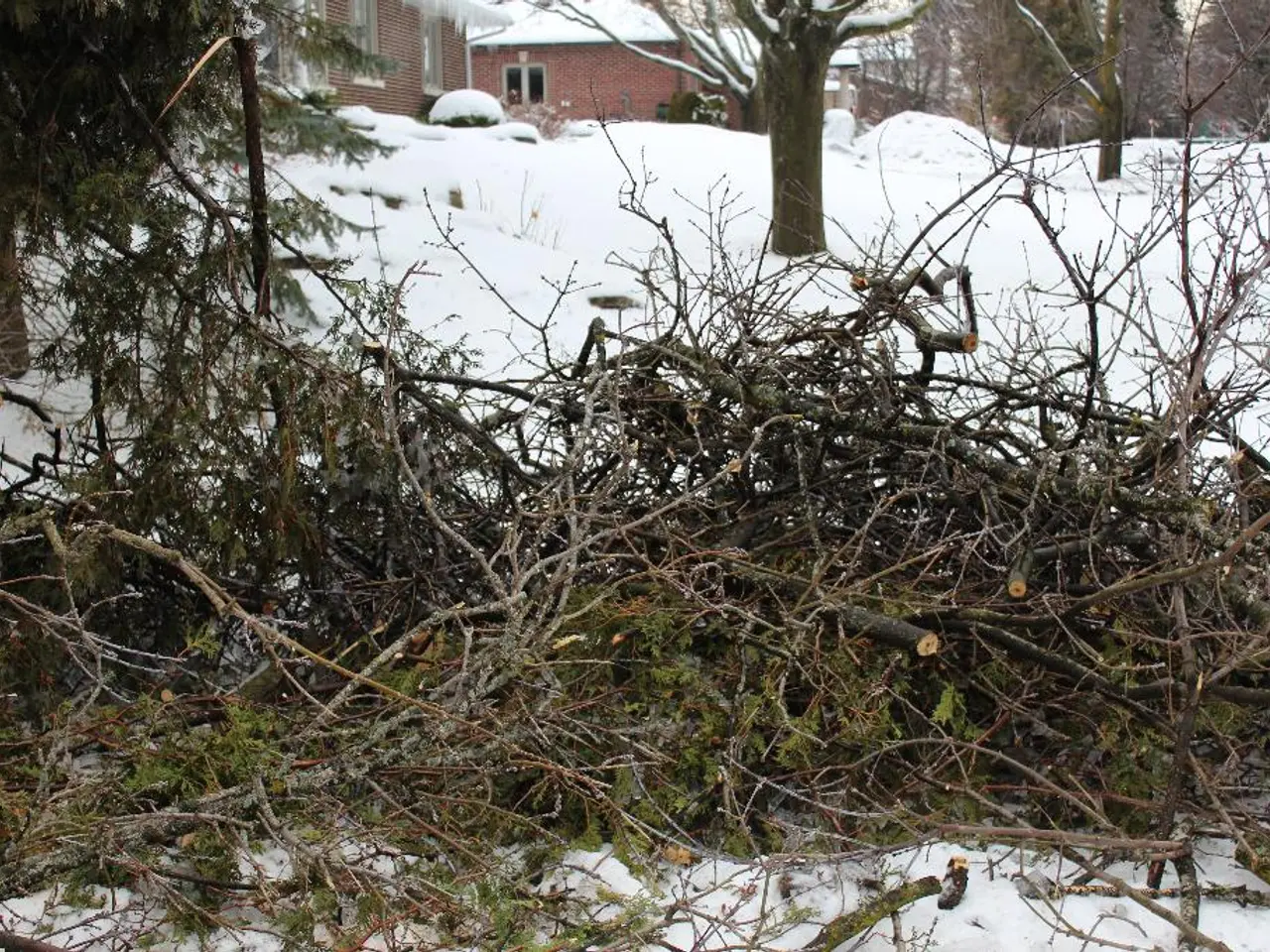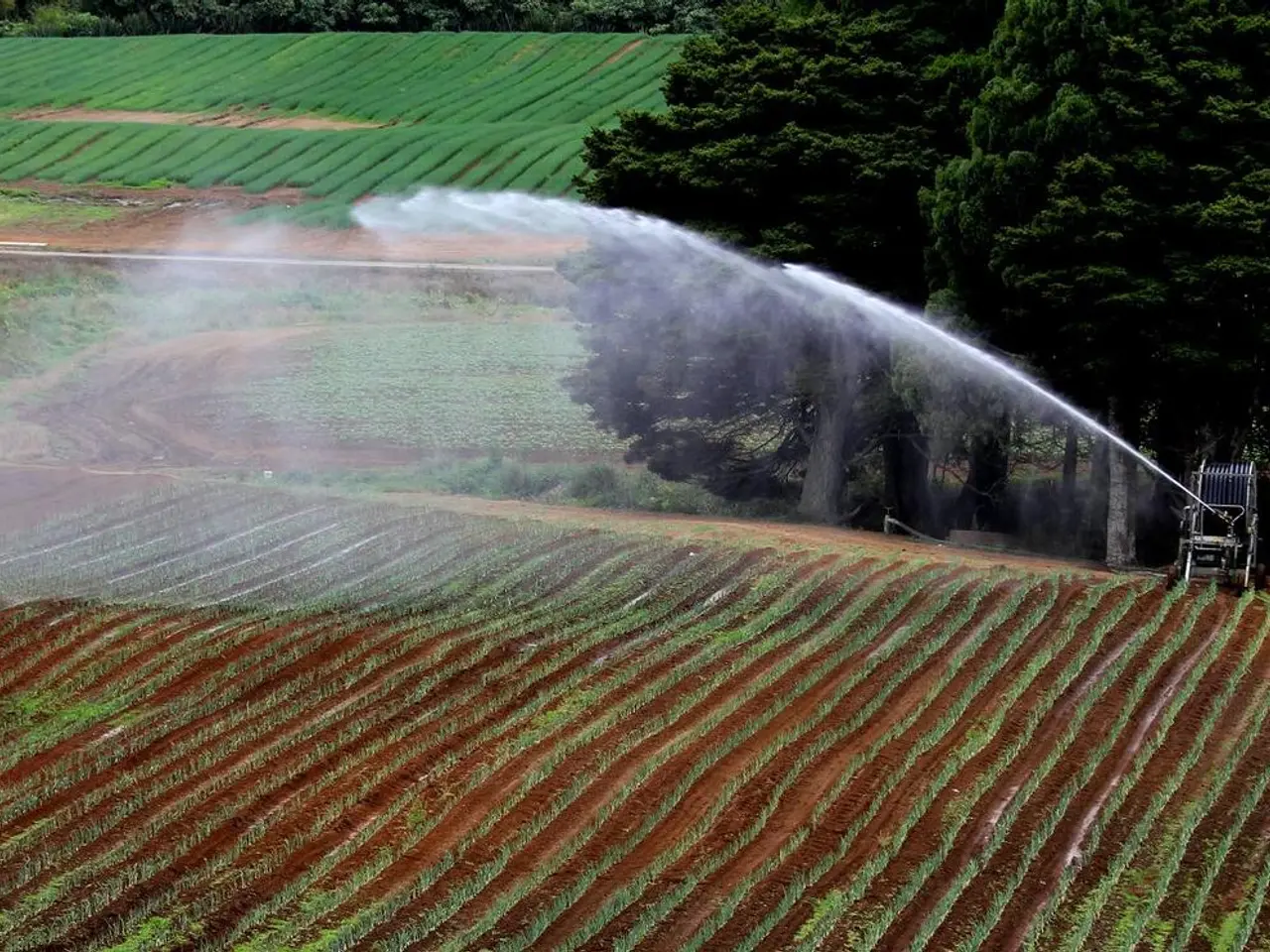Pruning Strategy Discussed by Frances Tophill in February
In the frosty heart of winter, when the garden lies dormant and the sap remains unrisen, there lies an opportunity for gardeners to tend to their apple trees. Pruning apple trees during this dormant period, ideally between mid-January and early March depending on the climate, can significantly improve tree health and fruit production.
The art of pruning apple trees in winter involves timing, technique, and proper tool use. By pruning during the dormant period, the tree's energy is stored in the roots rather than actively growing branches, ensuring a healthier tree come springtime.
When it comes to tools, sharp bypass pruners are ideal for small branches up to ¾ inch, while loppers are better suited for larger limbs between 1-2 inches. To prevent disease transmission, clean blades with rubbing alcohol between cuts.
The pruning techniques are straightforward yet effective. Begin by removing dead or diseased branches to prevent issues spreading. Eliminate crossing or crowded limbs to open the tree’s interior for better air circulation and sunlight penetration. Make cuts at a 45-degree angle just above outward-facing buds to promote healthy healing and encourage growth outward rather than inward.
Use heading cuts to reduce branch length and manage tree size, and apply thinning cuts by removing entire limbs to improve airflow and light exposure. Renewal cuts can be used to remove older wood and stimulate new growth.
The objectives of winter pruning are to shape the structure, balance the fruit load, and strengthen the tree. This process trains apple trees for maximum productivity and helps prepare them for an explosive spring growth spurt fueled by the dormant season energy reserves.
Avoid pruning during active bloom or when buds begin to swell, as this can hinder bud development and lead to aggressive regrowth. Light summer pruning can be used to control suckers without affecting yield.
Fruit trees like apples and coppice trees such as chestnut, willow, and hazel respond well to pruning. In February, bulbs like crocus and snowdrops can be found peeping through the soil, while winter heathers can be pruned now to remove old seed heads.
Step 1 of winter pruning apple trees involves removing growth inclining towards the centre to form a goblet or framework of strong branches. Step 2 involves thinning crowded shoots, removing dead, diseased, or crossing branches to improve air circulation.
Additional tips include not pruning tender plants yet due to the risk of rotting and dying. Hydrangea seedheads can be removed, and the plant can be cut back to a pair of swollen buds. Grape vines should be pruned before time runs out.
Cornus winter-stem cultivars should be cut to a stump, with 'Midwinter Fire' losing a third of its growth. Crab apples, pears, medlars, and Rowan can be pruned now, while stone fruits like plums, apricots, peaches, and cherries should wait until spring. Forsythia should not be pruned now to prevent flowers.
Pruning new growth on perennials should be done with caution to avoid ingress of bacteria and fungus. Chaenomeles should be pruned after flowering, and late-fruiting shrubs like cotoneaster, Euonymous europeaus, and E. elatus can be tidied up.
By following these best practices during the winter dormant window, gardeners can enjoy healthier apple trees that are easier to manage, have reduced disease risk, and produce more abundant and better-quality fruit.
In the realm of home-and-garden hobbies, gardening and pruning apple trees are unique winter activities that not only enhance the lifestyle of gardeners but also contribute to the health and productivity of the trees. By adhering to the appropriate pruning techniques, such as using suitable tools, making careful cuts, and focusing on the objectives of shaping, balancing fruit load, and strengthening the tree, gardeners can ensure a bountiful harvest in spring.




